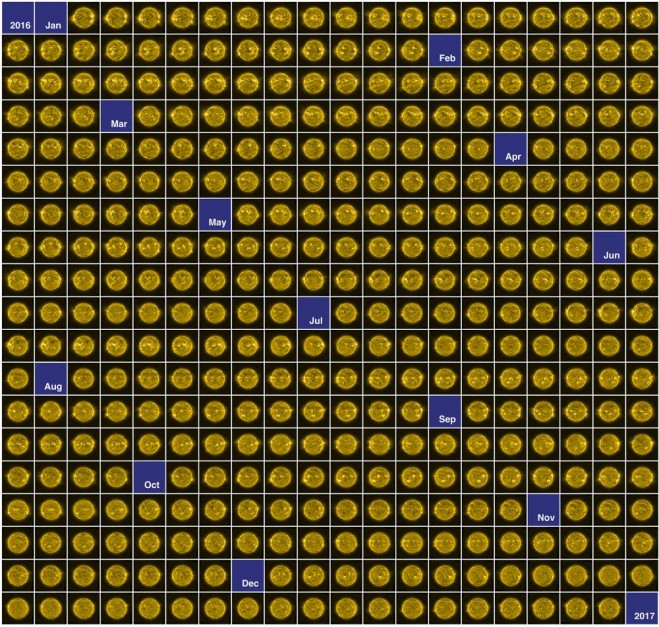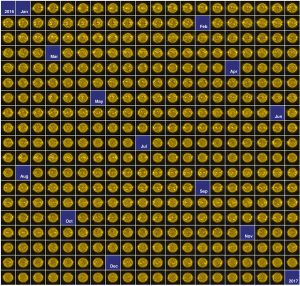

A montage of 366 images shows our Sun through the eyes of ESA’s Proba-2 satellite, as seen each day in 2016. (Credit: ESA/Royal Observatory of Belgium)
The SWAP camera onboard the European Space Agency (ESA) Proba-2 satellite takes advantage of extreme ultraviolet wavelengths to capture the hot turbulent atmosphere of the Sun’s solar corona. To illustrate what SWAP does and what it can teach, ESA and the Royal Observatory of Belgium collected and published 366 solar images—one for each day of the year. Each image was created from 30 separate images captured at 01:00 GMT and processed to enhance the features extending from the solar disc.
Throughout 2016, the Sun’s 11-year activity cycle continued toward its minimum, a period when the number of sunspots, active regions, solar flares and eruptions diminish. Nonetheless, the most-active region of last year can be seen in the July 17 image, which produced eight of the year’s 20 most-powerful flares.
Other prominent features include coronal holes: darker regions indicating lower levels of emission. However, coronal holes can produce streams of fast solar wind that can trigger geomagnetic storms on Earth. One of the largest holes observed last year can be seen toward the north of the Sun on November 24 and was present for several solar rotations.